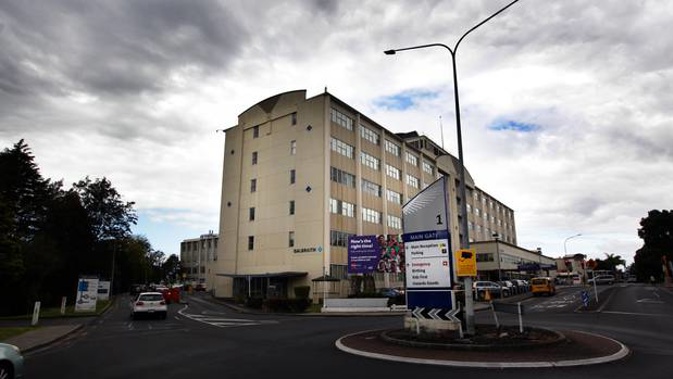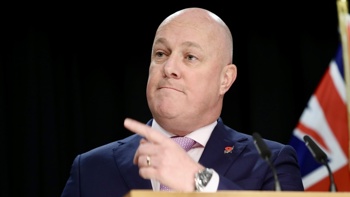
One of the country's busiest hospitals is so stretched that cancers are being discovered too late, poorer patients are being overlooked and there are fears it won't cope with an expected spike in winter flu cases.
The fears are revealed in a letter from health bosses at Middlemore Hospital to Health Minister David Clark.
The letter, part of a briefing for his visit to the Hospital on March 13 was obtained by the Weekend Herald under the Official Information Act.
On behalf of department heads, the Counties Manukau DHB director of medicine writes that the general medicine department is in crisis, with fears that the hospital won't cope with a surge in flu cases.
"As a department our bed demand is exceeding capacity on a daily basis at a time of year where we would expect this not to be so. This does not bode well for the winter this year especially as we expect a flu season on a par with that of 2014/15 where admissions due to flu spiked.
"We spent much of last winter with an occupancy rate of >100% and at times up to 170%. In reality this means that on some days up to 70 medical patients were being cared for in non-medical beds e.g. surgical, orthopaedic or gynaecology and at times paediatric beds.
The director, whose name is redacted from the letter, says 109 beds are desperately needed to cope for winter, along with the resource to manage the beds.
That did not account for a growth in population of the Counties Manukau Health area.
Most departments reported problems related to stretched staffing, resources and capacity. New health programmes such as bowel screening and Ministry of Health targets were stretching them further.
The head of gastroenterology welcomed the start of bowel screening in New Zealand but voiced concerns for the welfare of the population the hospital serves.
"We need a significant increase in resource for both theatre capacity and manpower that are not adequately funded by the program," the letter reads.
"Our other work has fallen down with this focus on bowel screening. Nearly every week I see or hear about someone where the 162-day wait for a gastroscopy that has been clinically assessed should be done in 42 days, has led to a cancer being discovered too late."
Those who could afford it or who had private insurance paid for the procedure but those financially disadvantaged suffered.
"We are discriminating against our most needy citizens. Please consider some extra funding to ensure that our patients who are not in the screening cohort also get timely and equitable treatment."
The clinicians detailed ongoing problems finding rooms for patients needing chemotherapy, sometimes delaying treatment.
"We have had multiple occasions recently when a room is not available for patients coming in for planned chemotherapy, leading to delays in the commencement of treatment and subsequent prolongation of their inpatient stay."
There was little regional spare capacity in cardiology and the "highly deprived population of Counties Manukau is receiving inequitable access to life-saving/life-improving therapies compared with most other areas of NZ (except Northland)".
Against this backdrop, Counties Manukau DHB and the other three northern region DHBs have urged Clark to urgently make a decision on a new hospital for the region to relieve some of the pressure.
But the minister already appears to have poured cold water on the proposal.
A key point in the minister's briefing says: "The Government should make a decision or establish a process to decide on a new hospital site and its location in metro Auckland as soon as possible."
The four DHBs that make up the northern region – Northland, Waitemata, Auckland and Counties Manukau –made the case for a new hospital in their Northern Region Long Term Investment Plan, which is with Clark but has not been publicly released.
Clark told the Weekend Herald the Government was aware of the pressures on Auckland hospital services that came with a growing and ageing population.
"But that does not necessarily require a new hospital," he said in a statement.
"Over time we will increase hospital capacity in Auckland, that's one reason why the Government pumped $750 million into capital investment in health in the Budget.
"I know DHBs are mindful of these issues and are developing plans and business cases for projects to add capacity to the public health service. Those projects will go through the usual capital investment process for consideration and extra capacity will be added in Auckland in coming years," Clark said.
He was not available later to comment on the content of the letter from clinicians.
Comment was also sought from Middlemore Hospital chief executive Gloria Johnson but was not received before deadline.
The Northern Region Long Term Investment Plan was provided to ministers in late March.
An Auckland DHB spokesperson said it was the result of more than 18 months of work by the four DHBs to develop a long-term investment plan that ensured the northern region had sufficient capability and capacity to meet increased demand.
According to Stats NZ, the Auckland region is projected to account for more than half New Zealand's population growth between 2013 and 2043, and forecast to reach two million by 2033.
Counties Manukau DHB said in a report in December that it had reached "tipping point … where the demand from population growth has overwhelmed the existing infrastructure".
Middlemore Hospital has also been at the centre of revelations about the conditions of its buildings, including earthquake risk, weathertightness problems, leaking sewage, the presence of asbestos and an insecure power supply.
The northern region DHBs have 11 main hospitals but a large number of clinics and other facilities serving the area stretching from the Far North to Port Waikato in the south.
The new fears come after revelations four Middlemore Hospital buildings were leaking and had dangerous mould, fungus and bacteria growing in them.
Raw sewerage was also leaking into the walls of one of the buildings due to deteriorating pipes the health board's chief executive said.
The cost of repairing and refurbishing the buildings would run into the tens of millions of dollars, documents showed.
Take your Radio, Podcasts and Music with you









